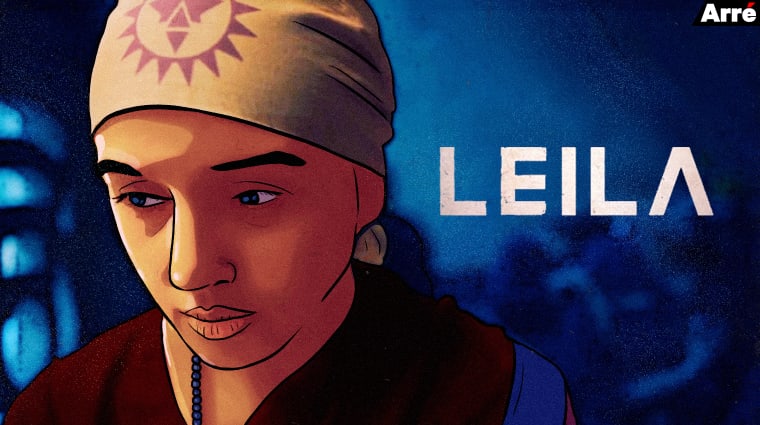Leila- A Cautionary Take on Indian Social Reality
“My lineage is my destiny. I am blessed to have been born in this land,”
A group of women, donned in a red saree with Aryavarta symbol on their wrist, are forced to chant the motto of Aryavarta repeatedly. The eerie character of their chants is unsettling and as the story proceeds, you are immersed into the narrative of Shalini who is utterly trapped at the Shram Kendra (a "purity camp" for women who dare to rebel against the Council — a group of powerful, elite politicians who make the rules of this dystopian setting).
Set in the backdrop of a totalitarian regime, Leila, Netflix’s latest original dystopian drama is a compelling political narrative that offers a daring critique of hyper-nationalism and the suppression of free speech. Directed by Deepa Mehta, this digital adaptation Leila is set in the year 2047, in a fictional nation called Aryavarta, which is governed by the values of peace and purity. The class and caste differentiation manifest itself in the spatial segregation of the county. Cities are divided into sectors with sky-high walls. Each sector has one community, free to practice their beliefs, but not free to build a relationship with anyone from another caste or religion. Beyond the high walls of Aryavarta are the Doosh (the polluted caste), who live in the slums. They are not allowed inside Aryavarta, have to scrounge for clean water, and live in filthy conditions amid huge piles of garbage.
Shalini Pathak (Huma Qureshi), a member of the topmost strata, is a transgressor who marries outside of her religion, In the first frame, we see her Muslim husband (Rahul Khanna) brutally lynched in their own home and her daughter snatched from her because she is of mixed blood. Shalini is sent to Vanita Mukti Kendra where she is stripped of her entitlement and dignity. The Vanita Mukti Kendra is modeled on the ideals of unquestionable obedience and purity. The women are drugged so that they don't rebel while they are polishing shoes, rolling on the eaten plates of men, and compelled to take a bath in a tub full of filthy water.

The totalitarian regime of Aryavarta bears striking similarities with Margaret Atwood’s Republic of Gilead which was beautifully captured by Hulu’s adaptation of The Handmaid’s Tale. The Republic of Gilead is excessively repressive which is manifested in the surveillance techniques it uses to control its women. The Sons of Jacob ensure continuity of their rule and complete absence of dissent by using men as “Eyes” or “Angels” in order to continually survey its citizens and ensure obedience. The social category of the Handmaid can be defined as the reproductive tool that is owned by the elite class in order to bear children for them as their relevance depends on the function of their reproductive organs. The function and the social position of the handmaid is determined by their bodily activity which is effectively captured in their red outfit- the colour of lust. They are also made to wear what is called “wings,” which function to block the peripheral vision of the Handmaids and make sure they only look down while walking. The women of Vanita Mukti Kendra are dressed in a strikingly similar red coloured attire where they spend their days doing menial tasks and are made to undergo sadistic rituals that include rolling over plates of half-eaten food. The red dress, along with the locket with a picture of Guru Maa (surprisingly played by a man), worn by the women of Vanita Mukti Kendra is an effective mechanism in representing ideologies of Aryavarta as their dress is an important tool in the service of their oppressive position within the social fabric.
Apart from the vivid costumes, the blue-tinted cinematography plays a critical role in heightening the drama of the narrative. The constant cloud of haze hanging on Aryavarta, sites of filth and garbage piling up and clouds shower black droplets of rain paints a gory picture of the future which is waiting for us if we do not actively engage with the growing environmental crises. In Leila, the social order collapses due to severe air pollution and depletion of water resources which results in an utter state of chaos. It is in this aspect that the physical world of Leila is closer to the present than the future. If we continue to deplete our resources at an alarming rate, then clean water, fresh air and a hygienic environment will be luxuries only a few would be able to afford in the near future.
Netflix's Leila is a highly engaging show which holds a mirror to the society and offers a scathing critique of hyper-nationalism, liberal complacency and caste politics. As Deepa Mehta rightly says “It is always the survival. I have always thought of art as an acquired rebellion”
(The illustration is prepared by Robin Chakraborty.)

0 Comments Add a Comment?